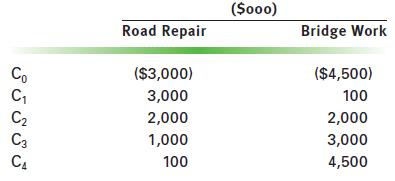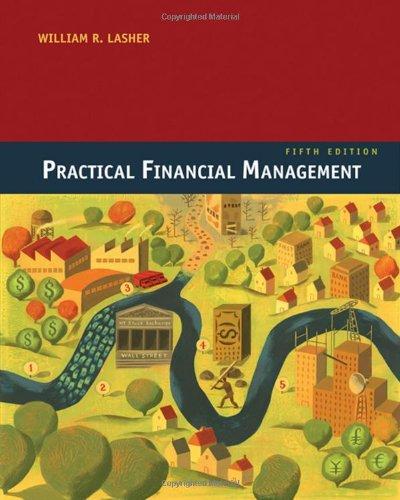23. Kneelson and Botes Inc. (K&B) is a construction company that does road and bridge work for...
Question:
23. Kneelson and Botes Inc. (K&B) is a construction company that does road and bridge work for the state highway authority. The state government solicits bids on construction projects from private contractors. The winning contractor is chosen based on its bid price as well as its perceived ability to do the work.
Sophisticated contractors develop bids using capital budgeting techniques because most projects require cash outlays for hiring, equipment, and materials before getting started (C0). After that the state makes progress payments to cover costs and profits until the job is finished (C1 . . . . . Cn).
Contractors know that even after they’ve won a bid, realizing the planned profits and cash flows isn’t assured in part because government budgets can change while construction progresses. If funding is up, officials tend to add to the work originally ordered leading to increased profits and cash flows. But if funding is down, officials start to nit pick the contract looking for cost savings, which generally leads to lower cash inflows. State budget projections are fairly good for a year or two, but tend to be inaccurate over longer periods.
K&B has been offered two, four-year contracts, but doesn’t have enough cash or management depth to take on both (mutually exclusive because of resource limitations). One project involves road repair, most of which will be done and paid quickly. The other requires working on a new bridge. The bulk of the cash inflows on bridge projects generally occur near completion.
K&B’s estimating department has put together the following projections of the two projects’ cash flows:

K&B doesn’t know its exact cost of capital, but feels it’s between 10 and 15%.
This is not uncommon in smaller companies. (In Chapter 13 we’ll learn that estimating the cost of capital can be difficult and less than precise for firms of any size.)
The company has hired you as a financial consultant to make a recommendation as to which project to accept.
a. Calculate the payback period for both projects. Which does payback choose?
b. Calculate the IRR for both projects. Which does the IRR method choose? Is the choice clear or is it a close decision? Is the choice consistent with the result of the payback method?
c. Calculate NPVs for both projects for costs of capital from 10 to 15% in 1%
increments. Then plot both projects’ NPV profiles on a graph similar to that shown in Figure 10.2 on page 435. Does the NPV method give a meaningful result? If so is it consistent with the results of the payback and IRR methods?
Which method is theoretically the best? Does that help in this situation?
d. You must make a recommendation to K&B’s management regardless of any technical difficulties you’ve encountered. Provide another, less quantitative argument that tends to support one project over the other. (Hint: See question 6 on page 446 and Business Analysis 4 on page 447.)
e. What is your recommendation and why?
Step by Step Answer:







